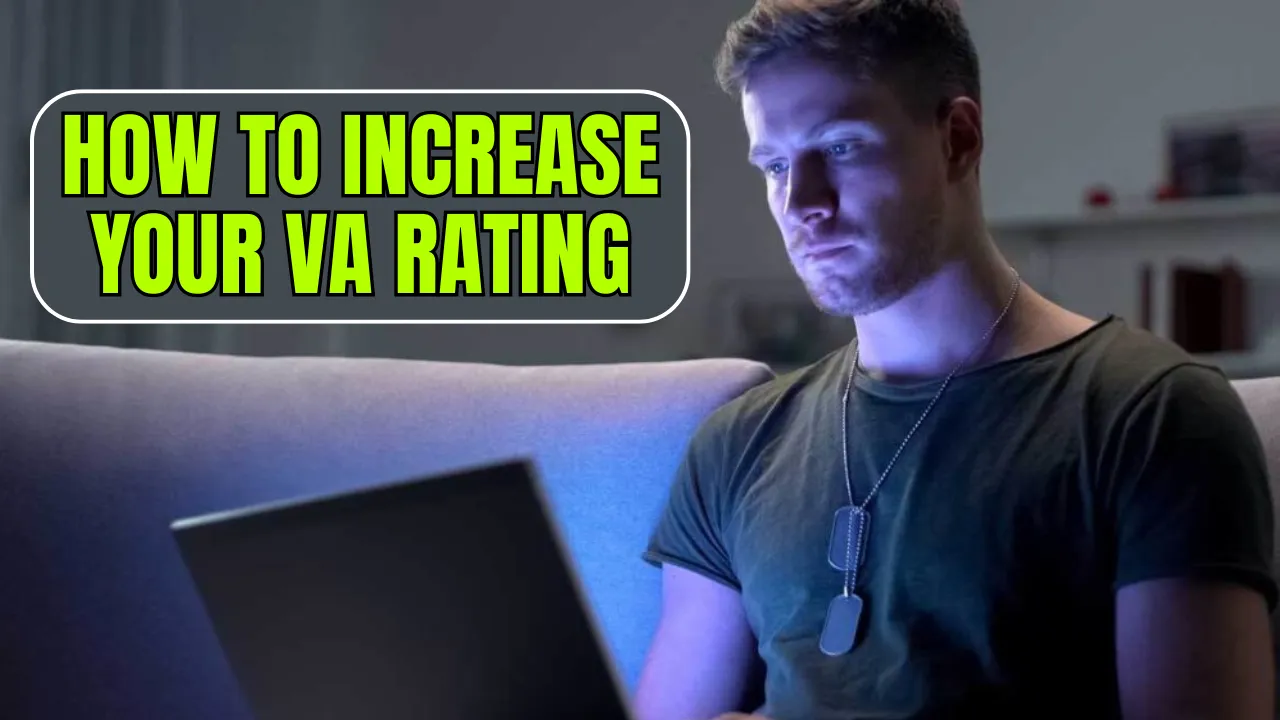How to Increase Your VA Disability Rating: How to Increase Your VA Disability Rating is a question many disabled veterans ask when their current rating doesn’t reflect their health condition. Veterans rely on their disability compensation to manage daily expenses, especially when they cannot maintain steady employment due to service-connected injuries or illnesses. However, over time, these conditions may worsen, or new secondary conditions might develop, making it essential to request a rating reevaluation.
In 2025, with inflation continuing to impact the cost of living, an updated VA disability rating can mean vital financial relief. The Department of Veterans Affairs (VA) allows veterans to apply for a higher rating if they believe their current evaluation does not match the severity of their condition. This article breaks down the steps, requirements, and options available to help veterans secure the benefits they deserve.
How to Increase Your VA Disability Rating
The process of how to increase your VA disability rating involves proving that your condition has worsened since your last evaluation or that your original rating was incorrect. Veterans with multiple disabilities may also qualify for a higher combined rating. However, VA does not simply add up the percentages—there’s a specific formula they follow, which often results in a combined rating lower than expected.
If your service-connected disability is more severe now than before or you have developed a secondary condition due to the original injury, it’s your right to file for a rating increase. A higher rating not only boosts your monthly compensation but can also unlock access to additional benefits like health care or housing assistance.
Overview Table: How to Increase Your VA Disability Rating
| Category | Details |
| Topic | How to Increase Your VA Disability Rating |
| Department | Department of Veterans Affairs (VA) |
| Program | VA Disability Program |
| Eligibility | Honorably discharged veterans with service-connected disabilities |
| Disability Rating Range | 10% to 100% |
| Payment Date | First business day of each month |
| Application Form | VA Form 21-526EZ |
| Submission Options | Online, mail, fax, in-person, or via VSO |
| Official Website | va.gov |
When Should You Request a Rating Boost?
You should consider applying for a rating increase if:
- Your service-connected condition has worsened and impacts your quality of life or ability to work.
- You’ve developed a secondary condition linked to your original disability.
- The original rating seems inaccurate or doesn’t reflect the full extent of your condition.
Veterans facing increased medical needs, mobility issues, or worsening symptoms should not delay in requesting a reevaluation. The sooner you apply, the sooner you may receive a higher payment and better benefits.
Steps to File a VA Disability Rating Increase
If you believe you deserve a higher VA disability rating, follow these essential steps:
1. Collect Medical Evidence
To support your request, strong and up-to-date medical documentation is crucial. Include:
- Recent medical reports showing how your condition has progressed.
- Doctor’s notes detailing the daily impact of your condition.
- Prescriptions, treatment history, or hospitalization records.
- Personal statements from family, friends, or coworkers describing changes in your health or behavior.
- Work-related documents showing job loss, reduced hours, or disability leave due to your condition.
- Social Security Disability (SSDI) records, if applicable.
2. Completing Your Claim for an Increase
Once you’ve gathered evidence, you can submit your claim through:
- Online: Log in and file at www.va.gov
- Mail: Complete VA Form 21-526EZ and mail it to the VA Claims Intake Center
- In-Person: Visit your local VA regional office
- With a VSO: Contact a Veterans Service Organization (VSO) such as DAV, VFW, or American Legion for free assistance
Make sure your claim clearly explains how your condition has changed and includes all supporting documents.
Compensation and Pension (C&P) Examination
Once your claim is filed, the VA may schedule a Compensation and Pension (C&P) exam to assess your current condition. This exam is performed by a VA doctor or a contracted medical provider.
During the exam:
- Be honest about your symptoms—do not downplay the impact of your condition.
- Explain how your disability affects your daily life (mobility, sleep, work, mental health).
- Share any relevant medical records or treatment summaries you have.
The C&P exam plays a major role in whether your disability rating will be increased, so it’s important to prepare well.
If Your Request Is Not Approved
If the VA denies your claim for a higher rating, you still have options. You can appeal within one year using one of three approaches:
- Higher-Level Review: A more experienced claims adjudicator reexamines your case.
- Supplemental Claim: Submit new medical evidence to support your case.
- Board Appeal: A Veterans Law Judge at the Board of Veterans’ Appeals will review your claim and make a decision.
Appealing a denial can be time-consuming, but if you have strong evidence and support, it can lead to a successful outcome.
Other Ways to Boost Your VA Compensation
Even if your disability rating stays the same, you might qualify for additional VA benefits that offer higher payments:
- TDIU (Total Disability based on Individual Unemployability): If your service-connected disability prevents you from working, you may qualify for 100% pay even if your rating is below 100%.
- Special Monthly Compensation (SMC): Provided to veterans with severe conditions like loss of limbs, blindness, or the need for regular assistance.
These benefits can greatly improve your quality of life and financial situation.
FAQs
What if my rating doesn’t reflect the seriousness of my condition?
You can file for a rating increase or appeal the original decision. A reevaluation and C&P exam will be conducted.
What is the most important part of the claim?
Medical evidence is critical. Include up-to-date doctor reports, treatment history, and personal impact statements.
What if I need help filing my claim?
You can get free help from a Veteran Service Officer (VSO), a certified VA representative, or an attorney who specializes in disability claims.
How long do I have to appeal a denied claim?
You have one year from the date of the denial notice to file an appeal.
Final Thought
Knowing how to increase your VA disability rating can be life-changing for veterans who are struggling with worsening conditions or inadequate financial support. By understanding the process, preparing the right documentation, and seeking help when needed, you can make a strong case for a higher rating and improved benefits.
If you believe your current rating doesn’t reflect your health, don’t wait. Take the first step today. Share this article with fellow veterans and explore other helpful resources on our website to guide you through the process.











